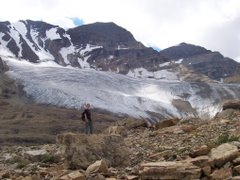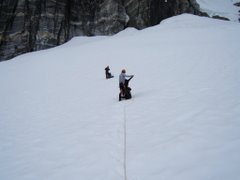




We can walk alone in the Taylor Valley, attached to civilization by a radio. Stretching legs, you wonder what you are doing heading out into the striking landscape, so whittled by the elements. The winds or snow set in at you feel changed by the mesmerizing power. You know you will make it back to camp, but shudder. So thankful that your body is fueled by sugar and motion. This is not our permanent camp, especially, in a timescale of millions of years- the age of the oldest exposed terraces. Small resilient creatures thrive here, their bodies joined to rock and sediment, or entombed in ice to revitalize for a few watery blinks every year. Some ancient and some newly birthed, a mystery to solve. Their persistence endures.







